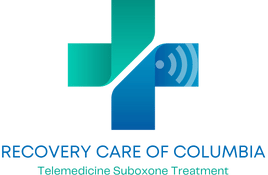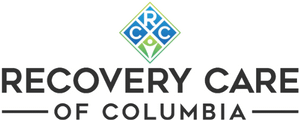Columbia Suboxone Clinic Blog
Is Inpatient Addiction Treatment Better than Outpatient Addiction Treatment?

According to the web:
Inpatient addiction treatment is a type of addiction treatment where the patient lives at the treatment center for the duration of their treatment. This type of treatment is typically recommended for people with severe addiction or co-occurring mental health conditions. Inpatient addiction treatment can provide a safe and supportive environment where patients can focus on their recovery without the distractions of their everyday lives. Treatment typically includes individual and group therapy, medication management, and 12-step meetings. The length of inpatient addiction treatment can vary depending on the individual’s needs, but it typically lasts for 30-90 days.
Outpatient addiction treatment is a type of addiction treatment where the patient attends ongoing sessions at a treatment center or online while living at home. This type of treatment is typically recommended for people with less severe addiction or who are able to maintain their employment and other responsibilities while in treatment. Outpatient addiction treatment can provide a more flexible option for people who cannot commit to inpatient addiction treatment, but it may not be as effective for people with severe addiction or co-occurring mental health conditions. Outpatient addiction treatment typically includes individual and group therapy, medication-assisted therapy, and 12-step meetings. The length of outpatient addiction treatment will vary depending on the individual’s needs.
My Real-life experience with Opioid Addiction and Inpatient & Outpatient Addiction Treatment:
In the year 2000 I started taking 2 hydrocodone 5mg tablets per day to manage lower back pain. I took them like clockwork. By 2002 I noticed they simply no longer worked for pain management. My family doctor increased my dose (albeit slowly) to 4 Hydrocodone 10mg tablets by the end of 2003.
I started buying pain pills on the internet which you could do easily back then, although illegal. By 2005 I was taking 6-7 hydrocodone 10mg tabs per day, sometimes more. This worked for a few more years, but eventually all opioids lose their effectiveness and more are required.
In 2009 went to a pain doctor and was able to get prescribed 100mg of oxycodone per day. I stayed the course until early 2011 when a friend turned me onto a book titled, “The Opioid Cure” by Dr. Robert Cochran. His book tells countless stories of people whose lives were changed for the better thanks to being prescribed opioids, typically oxycodone and/or OxyContin.
Dr. Cochran was a Nashville-based doctor, not far from where I lived. I went to see Dr. Cochran in 2011 and told him how much I loved his book. I won’t go into detail, but let’s just say I was well-taken care of. By month three we increased my dosage to a very hefty amount of opioids. Needless to say, I was feeling no pain… or much of anything, really.
My dosage was high enough that I often fell asleep while reading to my 2-year old son. I would simply wake up with him staring at me, not knowing how long I’d dozed-off.
In late 2012, Dr. Cochran informed me he was being asked to end his 40+ year career as a physician for reasons I can only imagine were brought down from the state medical board. He referred me to a doctor he promised would keep my dosage the same. I can’t name the doctor he referred me to, but I can tell you that this new doctor had no interest in sustaining my very high dosage of oxycodone and OxyContin.
In order to keep my dosage anywhere close to the amount it had been, he recommended epidural steroid injections. I had a total of 4 epidural steroid injections performed in my lower back for pain relief. Did they help? I think so. It’s very hard to tell when you’re heavily medicated.
By month four with my new doctor he told me it was time to taper me down to less than half of what I was used to taking. That’s when I started buying pills on the street.
The problem was, it would cost me almost $2000 per month to make up the difference from what I was used to taking. At the time, it really didn’t matter how much I took – it was never enough. Ever.
By end of 2013 I was in miserable shape. I was in constant withdrawal, able to last only 60-90 minutes without needing another pill. I couldn’t sleep. All I could think about was taking more pills, where to find them, and how to get the money to pay for them. It was the absolute worst time in my life.
So, I did what I thought anyone in my shoes would do – I made the decision to check myself into inpatient addiction addiction treatment.
I was sure inpatient addiction treatment would be my solution: I’d get clean, go through supervised withdrawals for a week and be done with my drug problem. Then ,on with the rest of my life.
Nothing could have been further from the truth. Yes, I did suffer 13 days and nights of horrible withdrawals. But, after they ended I felt more physically-ill than ever before in life.
I felt like I’d been hit by a truck. I could barely stand up for more than a minute without needing to sit down. I felt so heavy and tired I could barely stay awake during the day. At night I tossed and turned, never really getting any sleep. It’s a horrible feeling.
This miserable cycle lasted almost 6 weeks before I caved and went to a walk-in clinic for pain meds. I then went back to my old pain doctor and started the same old cycle of never quite having enough and always wanting more and more.
By the end of December 2013 I was in the darkest place of my life. I was addicted, I had failed inpatient addiction addiction treatment and was right back where I was just a couple months ago with no solutions in sight. I even considered suicide as a way out from my opioid addiction.
As a last resort I took the advice of a friend who recommended I try Suboxone. I had had Suboxone at inpatient treatment (for the first few days) and remembered how good I felt while taking it. It was the first time in almost 14 years that I actually felt normal, no cravings, no desire to take more drugs.
On January 8, 2014 I walked into a Suboxone clinic and forever changed my life.
I started Suboxone on January 9, 2014 and have not touched a drug since. It’s been over nine years since that day and I have never once thought of taking a drug. I can’t even count the many wonderful changes my life has gone through since getting clean.
Keep in mind – I was ready for a change. My desire to use drugs had long gone. I was taking pain pills out of necessity to avoid painful withdrawals and avoid feeling like absolute garbage.
Joining a 12-step program was a huge benefit to my recovery. You can use our Group Recovery Meeting Locator to find a meeting near you.
It was in group recovery that I learned the many reasons I had wanted to medicate myself for so many years. Through the help of a sponsor and doing the 12-steps, I was able to reconcile issues I’d been dealing with my whole life. Some issue I didn’t even know existed until they were brought to light in recovery.
What I Liked About Inpatient Addiction Treatment
Inpatient addiction treatment gave me a glimpse of what being clean could feel like, but my habits were just too strong and deep to be permanently cured in a “one and done” scenario.
Why Outpatient Addiction Treatment Was the Only Solution for Me
Outpatient addiction treatment was the only solution for me (and hundreds of other people I’ve met in recovery). Outpatient addiction treatment offers benefits that were a requirement for me to find long-lasting sobriety.
Reasons why Outpatient Addiction Treatment Worked for Me:
- You’re Not in a Bubble – Most anyone can get clean while in Inpatient treatment. It’s hard not to when you’re so isolated from bad people, drugs, and old habits. A bubble is only a safe place for as long as you’re in it.
- You Learn to Live in Your Own Environment – Some people might say that’s a bad idea and I can certainly see why. The truth is, no matter where you go, there you are. Meaning, you’d better find a way to make your old life work unless you’re planning to move away. Yes, there will be triggers like people, places and things that trigger old habits. However, the problem is on the inside, not the outside.
- Ongoing Therapy and Support – I needed ongoing help, not “one and done” help. I enjoyed going to my initial weekly visits at the clinic and then monthly visits. I met nice people who genuinely wanted to help me. The therapists were excellent and work primarily with opioid addiction patients. I felt understood and I appreciated the help.
- Time to Join a 12-Step Program – I needed to get my mind right. Private therapy and group recovery were the keys to unlocking and solving my many reasons for using and abusing drugs.
Ready to tackle your opioid addiction once and for all? Allow me to help.
My name is Drew Bourke and I’m co-owner and co-managing partner at Recovery Care of Columbia. Me and my staff understand addiction better than most. We use our personal addiction experience to help people transform their lives.
My personal experience with opioid addiction is what led me into a career of helping others do exactly what I did – Recovery from opioid addiction.
I have helped over 2000 people in Tennessee with their opioid addiction. Myself and my partner are in the same boat – we’re both here to help people because we’ve lived opioid addiction, and more importantly, learned how to overcome it.
Addiction treatment is all I do now. If you suffer from opioid addiction I genuinely hope I get the chance to work with you someday very soon.
Have questions? Feel free to email me at [email protected]
Ready to start an online Suboxone program today?
Recovery Care provides an online Suboxone clinic solution to anyone living in Tennessee. You can use your TennCare Medicaid insurance, commercial insurance, or pay out of pocket.
Don’t wait! End your opioid addiction now by starting an online Suboxone treatment program in Tennessee today!



